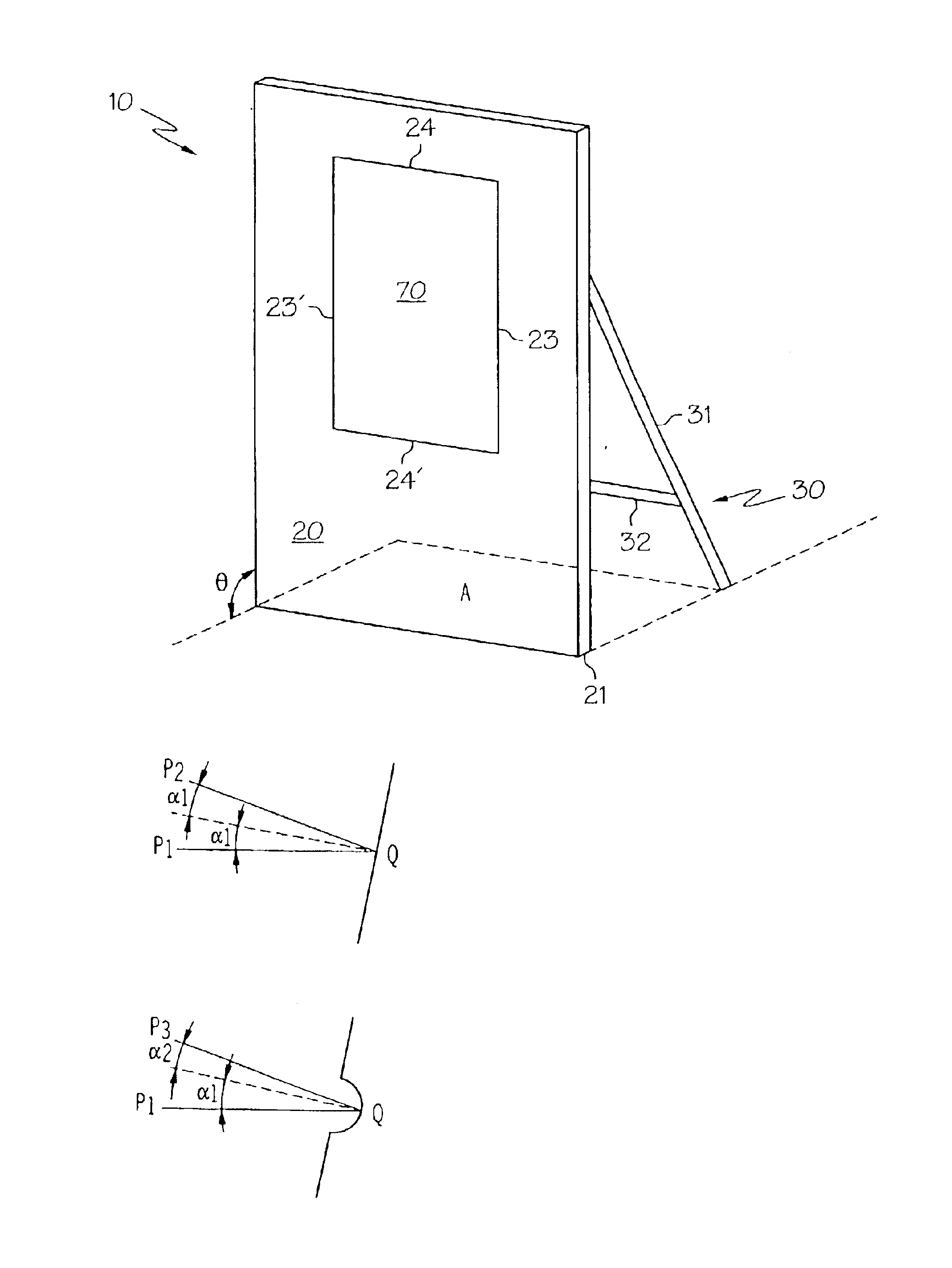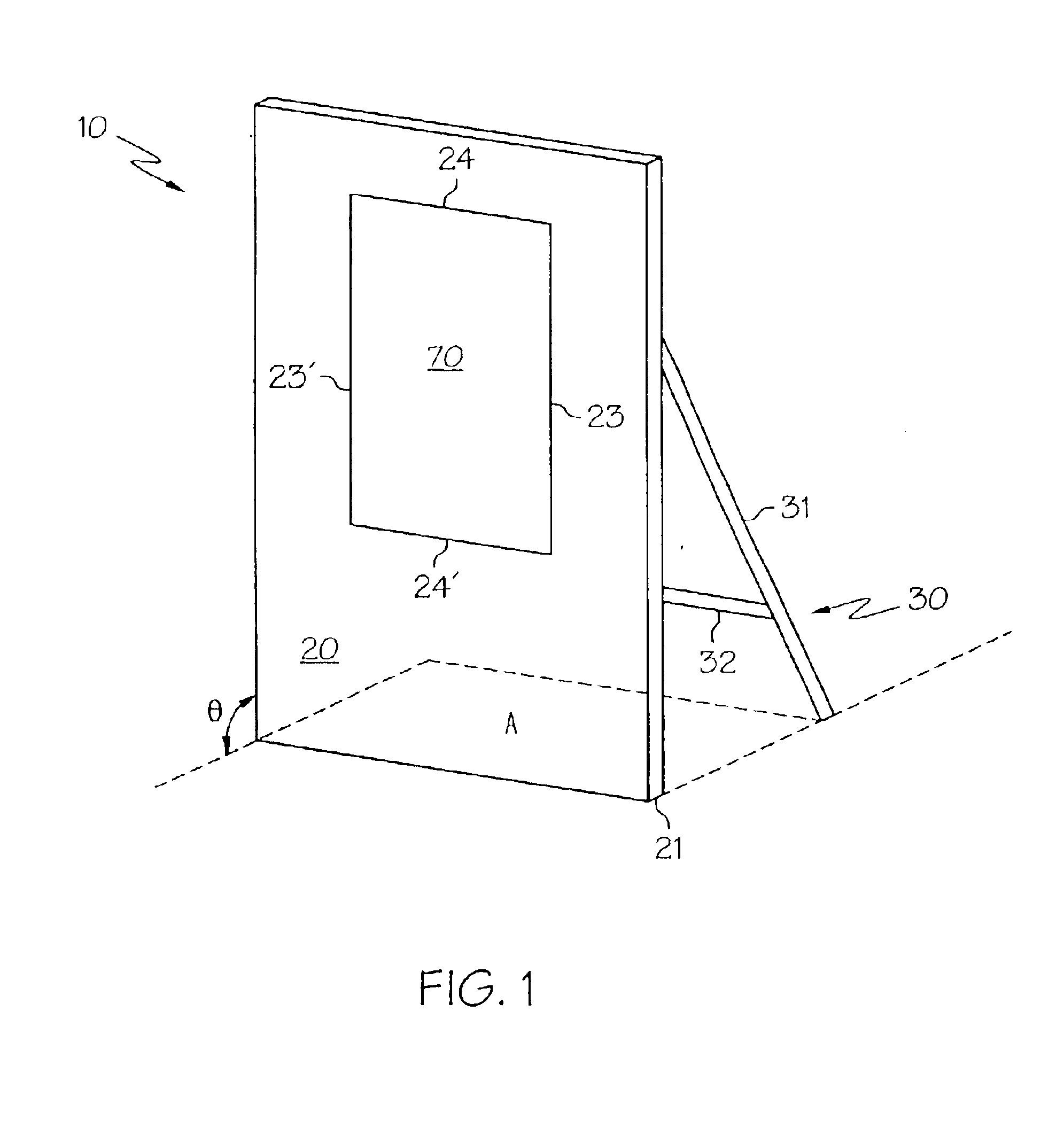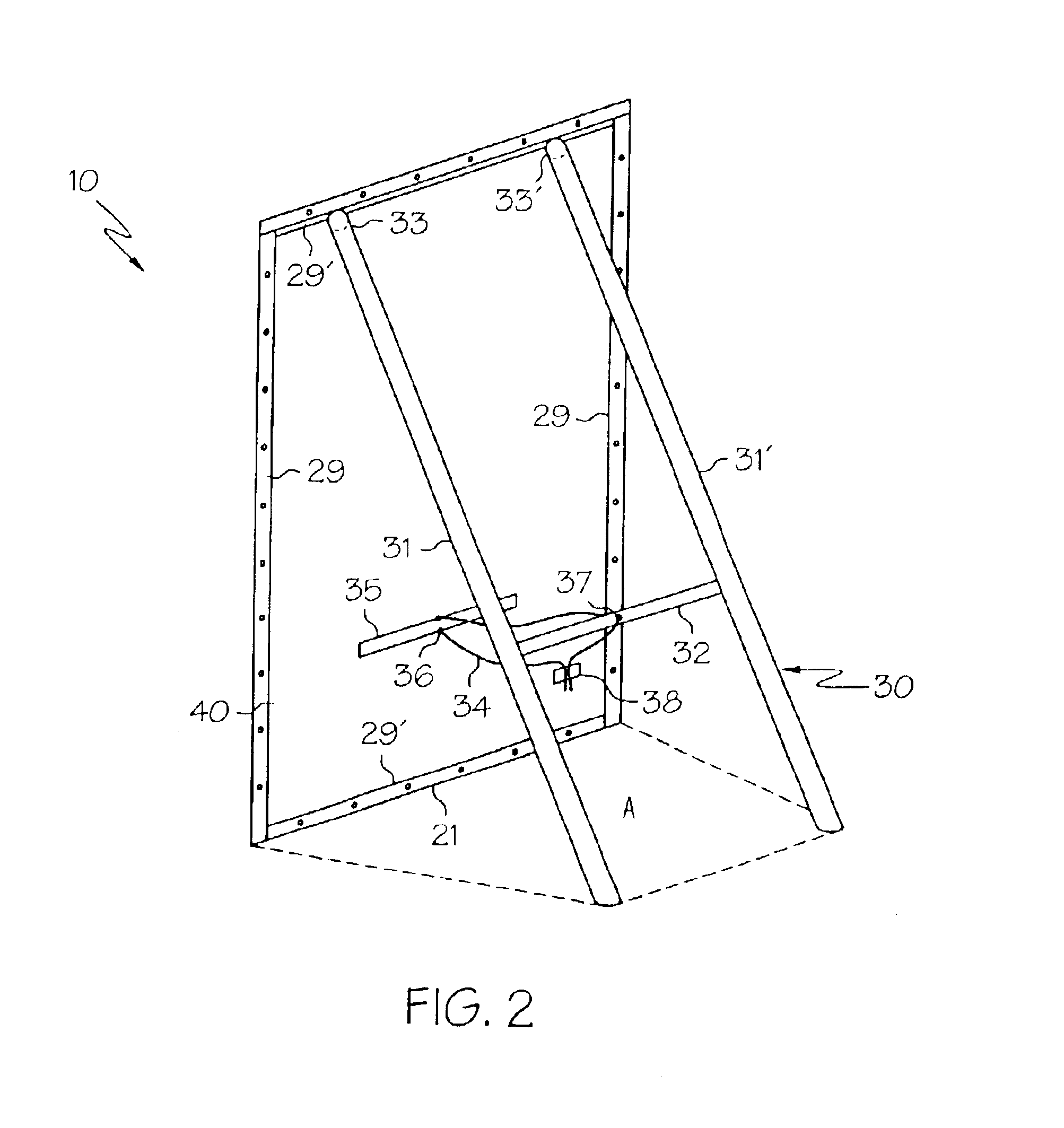Practice device for a baseball pitcher
a baseball pitcher and a technology for hitting targets, applied in the field of baseball hitting targets, can solve the problems of high variability of velocity and direction of ball return, too complicated for use, and too expensive to purchase and maintain
- Summary
- Abstract
- Description
- Claims
- Application Information
AI Technical Summary
Benefits of technology
Problems solved by technology
Method used
Image
Examples
example 1
A backstop is made from high density polyethylene (HDPE) sheet available from McMaster-Carr Supply Company (“McMaster”), the dimensions of the sheet being 122 cm (48″)×94 cm (37″)×0.32 cm (0.125″). To one face of the sheet is adhered a pad of white melamine foam having a density of 11.2 kg / cu meter (0.7 lb / cu ft) having a resilience measured as requiring 12 KPa (1.74 psi) to provide compression of 25% (also referred to as a 25% deflection). The pad is covered with a sheet of gray vinyl 1 mm (0.040″) thick with the margins of the sheet being uniformly tensioned and secured around the periphery of the HDPE backstop, and a strike zone defined with white adhesive tape.
A support structure illustrated in FIGS. 1-3 is provided by rectilinear or cylindrical struts 29, 29′ which may be of wood such as furring strips, each about 2.5 cm (1″)×3.75 cm (1.5″)×2 cm (0.75″)×69 cm (27″) long, or molded from a polyolefin such as polyethylene. The support structure is hingedly connected to the backsto...
example 2
In this illustrative example 2, a practice device is constructed with the same structural elements as the device in example 1 above, except that the resilient pad is a composite pad comprising a central pad having dimensions of a chosen strike zone, and a coplanar peripheral pad contiguous with and surrounding the strike pad.
The central pad is cut from 1.25 cm (0.5″) thick black colored Evalite ethylene vinyl acetate foam purchased from McMaster having a density of 32 Kg / cu meter (2 lb / cu ft) and requiring 34.5 KPa (5 psi) for 25% deflection.
The peripheral pad is cut from the same sheet of Melamine used in example 1, to leave a rectangular central aperture into which the central pad is snugly fitted. The dimensions of the peripheral pad are 122 cm (48″)×94 cm (37″).
A “strike” impacting the central pad is returned 84% further from the target than a “ball” pitched against the peripheral pad with the same velocity of 100 km / hr (62 mph).
example 3
The device is constructed in a manner analogous to that described in example 1 except the following resilient materials were used:Resilient backstop: 0.236 cm×122 cm×94 cm (0.093″×48″×37″) phenolic canvas (H-26000), flexural modulus 138 MPa (20×103 psi), obtained from Schoen Insulation Services having Izod Impact Strength 123 N-m / m (2.3 ft-lb / in).Resilient Pad: 0.95 cm (0.375″) thick “Ultimate” rebound polyurethane foam from Leggett & Platt Inc.Coversheet: 0.08 cm thick (0.031″) commercial grade black Neoprene rubber purchased from McMaster-Carr Supply Company.When the face of the target is at an angle of 120 degrees, a standard baseball (Rawlings Official League) pitched from 18.287 meters (60 ft) against the strike zone at 100 km / hr (62 mph) is returned about 3.4 meters (11 feet) from any location in the target.
PUM
 Login to View More
Login to View More Abstract
Description
Claims
Application Information
 Login to View More
Login to View More - R&D
- Intellectual Property
- Life Sciences
- Materials
- Tech Scout
- Unparalleled Data Quality
- Higher Quality Content
- 60% Fewer Hallucinations
Browse by: Latest US Patents, China's latest patents, Technical Efficacy Thesaurus, Application Domain, Technology Topic, Popular Technical Reports.
© 2025 PatSnap. All rights reserved.Legal|Privacy policy|Modern Slavery Act Transparency Statement|Sitemap|About US| Contact US: help@patsnap.com



